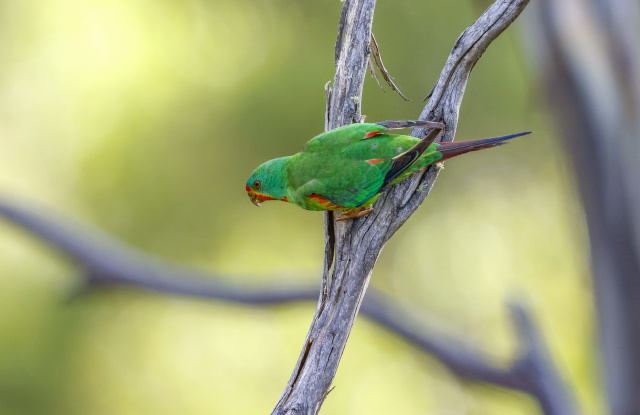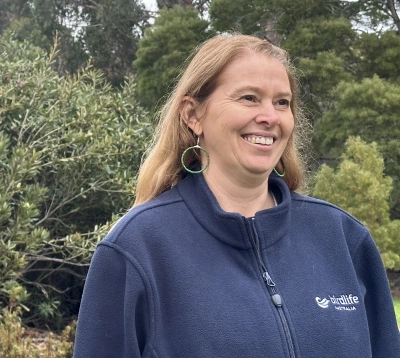Love of nature in the blood
My grandfather was an entomologist,
My Nan was an avid bird watcher, my Dad and my Mum ran a native landscaping business, and a few other relatives were also into conservation and National Parks. So it’s kind of been in the blood.
But in particular I grew up bushwalking, looking for insects with my grandfather, looking at birds, marsupials, frogs, everything, and that's part of the journey.
I'm also an artist, so I actually enjoy drawing native animals and in particular birds, and I actually spent a lot of my time while working, taking advantage of some of the work I've done in Tasmania and in New South Wales to follow a lot of threatened species and threatened birds, photograph and paint them, so that's kind of where I've come from.
It's a lot of different angles, but I'm very passionate about birds in particular.


Lyndel Wilson
My grandfather was an entomologist,
My Nan was an avid bird watcher, my Dad and my Mum ran a native landscaping business, and a few other relatives were also into conservation and National Parks. So it’s kind of been in the blood.
But in particular I grew up bushwalking, looking for insects with my grandfather, looking at birds, marsupials, frogs, everything, and that's part of the journey.
I'm also an artist, so I actually enjoy drawing native animals and in particular birds, and I actually spent a lot of my time while working, taking advantage of some of the work I've done in Tasmania and in New South Wales to follow a lot of threatened species and threatened birds, photograph and paint them, so that's kind of where I've come from.
It's a lot of different angles, but I'm very passionate about birds in particular.

You might like...

Children in Nature

The great Tasmanian bird count

Farmer of the white gums

Caves and Falls around Panay Peninsula
Newsletter
Sign up to keep in touch with articles, updates, events or news from Kuno, your platform for nature
